 One of the first events to raise concerns over
One of the first events to raise concerns over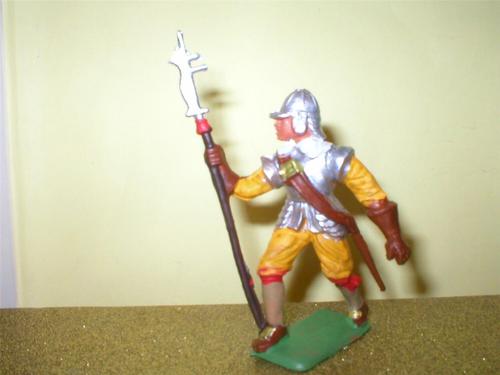 Charles's reign was his marriage to a French Roman Catholic princess, Henrietta-Marie de Bourbon, in 1625, directly after ascending to the throne.
Charles's reign was his marriage to a French Roman Catholic princess, Henrietta-Marie de Bourbon, in 1625, directly after ascending to the throne. Charles's marriage raised the possibility that his children, including the heir to the throne, might grow up as Catholics, an alarming prospect to Protestant England.
Charles's marriage raised the possibility that his children, including the heir to the throne, might grow up as Catholics, an alarming prospect to Protestant England.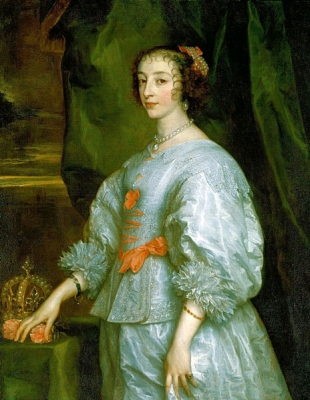
Charles set his sights on taking part in the conflicts which Europe was undergoing in the Thirty Years' War (1618–1648)
 .Foreign wars necessitated heavy expenditures, and the Crown could raise taxes only through Parliamentary consent (described above).
.Foreign wars necessitated heavy expenditures, and the Crown could raise taxes only through Parliamentary consent (described above). Charles experienced further financial difficulty when his first Parliament refused to assign him the
Charles experienced further financial difficulty when his first Parliament refused to assign him the  traditional right to collect customs duties for his entire reign, deciding instead to grant it only on a provisional basis.
traditional right to collect customs duties for his entire reign, deciding instead to grant it only on a provisional basis.
Charles, meanwhile, pressed ahead with his European wars, deciding to send an expeditionary force to relieve the French Huguenots whom Royal French forces held besieged in La Rochelle.
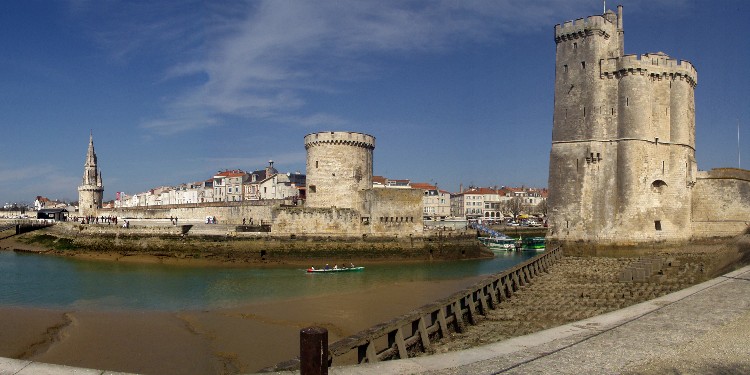 Military support for Protestants on the Continent was, in itself, popular both in Parliament and with the Protestant majority in general, and it had the potential to alleviate concerns brought about by the King's Catholic marriage. However, Charles's insistence on having his unpopular royal favourite George Villiers, the Duke of Buckingham
Military support for Protestants on the Continent was, in itself, popular both in Parliament and with the Protestant majority in general, and it had the potential to alleviate concerns brought about by the King's Catholic marriage. However, Charles's insistence on having his unpopular royal favourite George Villiers, the Duke of Buckingham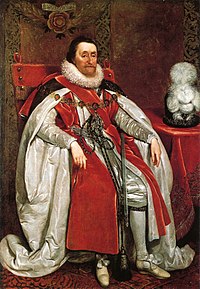 of England.
Restoration of Apethorpe Hall,
of England.
Restoration of Apethorpe Hall, undertaken in 2004–08, revealed a previously unknown passage linking the bedchambers of James and Villiers.Others argue that the relationships were not sexual.James's Basilikon Doron lists sodomy
among crimes "ye are bound in conscience never to forgive",
undertaken in 2004–08, revealed a previously unknown passage linking the bedchambers of James and Villiers.Others argue that the relationships were not sexual.James's Basilikon Doron lists sodomy
among crimes "ye are bound in conscience never to forgive", and James's
wife Anne gave birth to seven live children, as well as suffering two
stillbirths and at least three other miscarriages.Despite a very patchy political and military record, he remained at the
height of royal favour for the first two years of the reign of Charles I, until he was assassinated. He was one of the most rewarded royal courtiers in all history.Charles responded by dissolving Parliament. This move, while saving Buckingham, reinforced the impression that Charles wanted to avoid Parliamentary scrutiny of his ministers
and James's
wife Anne gave birth to seven live children, as well as suffering two
stillbirths and at least three other miscarriages.Despite a very patchy political and military record, he remained at the
height of royal favour for the first two years of the reign of Charles I, until he was assassinated. He was one of the most rewarded royal courtiers in all history.Charles responded by dissolving Parliament. This move, while saving Buckingham, reinforced the impression that Charles wanted to avoid Parliamentary scrutiny of his ministers villiers
villiersHaving dissolved Parliament and unable to raise money without it, the king assembled a new one in 1628. (The elected members included Oliver Cromwell.) The new Parliament drew up the Petition of Right, and Charles accepted it as a concession in order to obtain his subsidy. Amongst other things, the Petition referred to the Magna CartaCharles I avoided calling a Parliament for the next decade, a period known as the "Eleven Years' Tyranny" or "Charles' Personal Rule". During this period, Charles' lack of money determined policies. First and foremost, to avoid Parliament the King needed to avoid war. Charles made peace with France and Spain, effectively ending England's involvement in the Thirty Years' War, however that in itself was far from enough to balance the Crown's finances.
Unable to raise revenue through Parliament - and unwilling to convene it — Charles resorted to other means. For example, not observing often long-outdated conventions became, in some cases, a finable offence (for example, a failure to attend and to receive knighthood at Charles' coronation), with the fine paid to the Crown.
 The King also tried to raise revenue through the ship money tax, by exploiting a naval war-scare in 1635, demanding that the inland English counties pay the tax for the Royal Navy. Established law supported this policy, but authorities had ignored it for centuries,and many regarded it as yet another extra-Parliamentary (and therefore illegal) tax. Some prominent men refused to pay ship money arguing that the tax was illegal, but they lost in court and the fines imposed on them for refusing to pay ship money (and for standing against the tax's legality) aroused widespread indignation.
The King also tried to raise revenue through the ship money tax, by exploiting a naval war-scare in 1635, demanding that the inland English counties pay the tax for the Royal Navy. Established law supported this policy, but authorities had ignored it for centuries,and many regarded it as yet another extra-Parliamentary (and therefore illegal) tax. Some prominent men refused to pay ship money arguing that the tax was illegal, but they lost in court and the fines imposed on them for refusing to pay ship money (and for standing against the tax's legality) aroused widespread indignation.During the "Personal Rule," Charles aroused most antagonism through his religious measures: he believed in High Anglicanism, a sacramental version of the Church of England, theologically based upon Arminianism, a creed shared with his main political advisor,
 In 1633, Charles appointed Laud as Archbishop of Canterbury and started making the Church more ceremonial, replacing the wooden communion tables with stone altars. Puritans accused Laud of reintroducing Catholicism; when they complained, he had them arrested. In 1637 John Bastwick, Henry Burton, and William Prynne had their ears cut off for writing pamphlets attacking Laud's views—a rare penalty for gentlemen, and one that aroused anger. Moreover, the Church authorities revived the statutes passed in time of Elizabeth I about church attendance, and fined Puritans for not attending Anglican church services.
In 1633, Charles appointed Laud as Archbishop of Canterbury and started making the Church more ceremonial, replacing the wooden communion tables with stone altars. Puritans accused Laud of reintroducing Catholicism; when they complained, he had them arrested. In 1637 John Bastwick, Henry Burton, and William Prynne had their ears cut off for writing pamphlets attacking Laud's views—a rare penalty for gentlemen, and one that aroused anger. Moreover, the Church authorities revived the statutes passed in time of Elizabeth I about church attendance, and fined Puritans for not attending Anglican church services.The end of Charles' independent governance came when he attempted to apply the same religious policies in Scotland. The Church of Scotland, reluctantly Episcopal in structure, had independent traditions. Charles, however, wanted one, uniform Church throughout Britain, and introduced a new, High Anglican, version of the English Book of Common Prayer to Scotland in summer of 1637. This was violently resisted; a riot broke out in Edinburgh, which may have been started in a church by Jenny Geddes; and, in February of 1638, the Scots formulated their objections to royal policy in the National Covenant This document took the form of a "loyal protest", rejecting all innovations not first having been tested by free parliaments and General Assemblies of the Church.
 airfix conversions
airfix conversionsIn spring of 1639, King Charles I accompanied his forces to the Scottish border, to end the rebellion known as the Bishops' War, but, after an inconclusive military campaign, he accepted the offered Scottish truce — the Pacification of Berwick. The truce proved temporary; a second war followed in summer of 1640. This time, a Scots army defeated Charles' forces in the north, then captured Newcastle. Charles eventually agreed not to interfere with Scotland's religion, and paid the Scots war-expenses
 .
.Recall of the English Parliament
Charles needed to suppress the rebellion in Scotland. He had insufficient funds, however, and needed to seek money from a newly elected English Parliament in 1640.The majority faction in the new Parliament, led by John Pym, took this appeal for money as an opportunity to discuss grievances against the Crown, and opposed the idea of an English invasion of Scotland. Charles took exception to this lèse-majesté (offence against the ruler) and dissolved the Parliament after only a few weeks; hence the name "the Short Parliament".

Without Parliament's support, Charles attacked Scotland again, breaking the truce at Berwick, and suffered a comprehensive defeat. The Scots then seized the opportunity and invaded England, occupying Northumberland and Durham[ Meanwhile, another of Charles' chief advisors, Thomas Wentworth, 1st Viscount Wentworth, had risen to the role of Lord Deputy of Ireland in 1632 and brought in much-needed revenue for Charles by persuading the Irish Catholic gentry to pay new taxes in return for promised religious concessions.
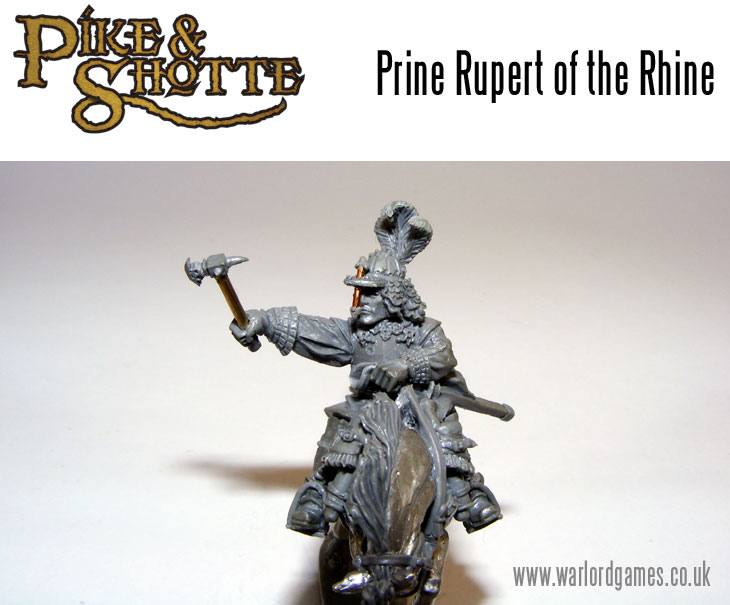
In 1639 Charles recalled Wentworth to England, and in 1640 made him Earl of Strafford, attempting to have him work his magic again in Scotland. This time he proved less successful, and the English forces fled the field in their second encounter with the Scots in 1640. Almost the entirety of Northern England was occupied, and Charles was forced to pay £850 per day to keep the Scots from advancing. If he did not, they would "take" the money by pillaging and burning the cities and towns of Northern England.

All this put Charles in a desperate financial position. As King of Scots, he had to find money to pay the Scottish army in England; as King of England, to find money to pay and equip an English army to defend England. His means of raising English revenue without an English Parliament fell critically short of achieving this. Against this backdrop, and according to advice from the Magnum Concilium (the House of Lords, but without the Commons, so not a Parliament), Charles finally bowed to pressure and summoned another English Parliament in November 1640.

The Long Parliament
The new Parliament proved even more hostile to Charles than its predecessor. It immediately began to discuss grievances against Charles and his Government, and with Pym and Hampden (of ship money fame) in the lead, took the opportunity presented by the King's troubles to force various reforming measures—including many with strong 'anti-Papist' themes—upon him. The legislators passed a law which stated that a new Parliament should convene at least once every three years—without the King's summons, if necessary. Other laws passed by the Parliament made it illegal for the king to impose taxes without Parliamentary consent, and later, gave Parliament control over the king's ministers. Finally, the Parliament passed a law forbidding the King to dissolve it without its consent, even if the three years were up. Ever since, this Parliament has been known as the "Long Parliament". However, Parliament did attempt to avert conflict by requiring all adults to sign The Protestation, an oath of allegiance to Charles.

In early 1641 Parliament had Thomas Wentworth, Earl of Strafford, arrested and sent to the Tower of London on a charge of treason. John Pym claimed that Wentworth's statements of readiness to campaign against "the kingdom" were aimed in fact at England itself. Unable to prove the case in court, the House of Commons, led by Pym and Henry Vane, resorted to a Bill of Attainder.

Unlike a guilty finding in a court case, attainder did not require a legal burden of proof, but it did require the king's approval. Charles, still incensed over the Commons' handling of Buckingham, refused. Wentworth himself, hoping to head off the war he saw looming, wrote to the king and asked him to reconsider. Wentworth's
 execution took place in May, 1641.
execution took place in May, 1641.Instead of saving the country from war, Wentworth's sacrifice in fact doomed it to one. Within months, the Irish Catholics, fearing a resurgence of Protestant power, struck first, and all Ireland soon descended into chaos. Rumours circulated that the King supported the Irish, and Puritan members of the Commons soon started murmuring that this exemplified the fate that Charles had in store for them all.
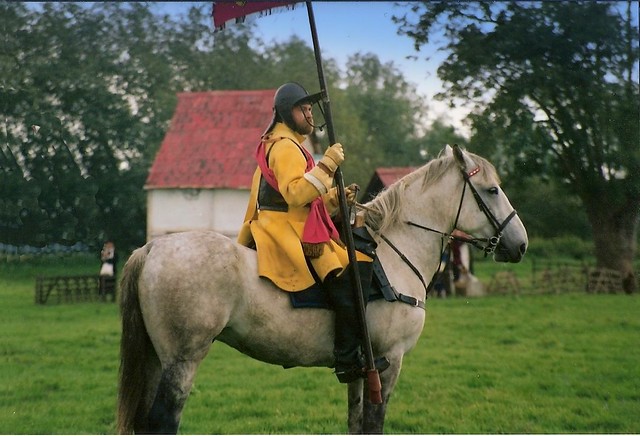
In early January 1642, accompanied by 400 soldiers, Charles attempted to arrest five members of the House of Commons on a charge of treason.This attempt failed. When the troops marched into Parliament, Charles inquired of William Lenthall, the Speaker, as to the whereabouts of the five. Lenthall replied "May it please your Majesty, I have neither eyes to see nor tongue to speak in thisplace but as the House is pleased to direct me, whose servant I am here." In other words, the Speaker proclaimed himself a servant of Parliament, rather than of the King.

Local grievances
In the summer of 1642 these national troubles helped to polarise opinion, ending indecision about which side to support or what action to take. Opposition to Charles also arose owing to many local grievances. For example, the imposition of drainage-schemes in The Fens negatively affected the livelihood of thousands of people after the King awarded a number of drainage-contracts. Many regarded the King as worse than insensitive, and this played a role in bringing a large part of eastern England into Parliament’s camp. This sentiment brought with it people such as the Earl of Manchester and Oliver Cromwell, each a notable wartime adversary of the King. Conversely, one of the leading drainage contractors, the Earl of Lindsey,
 was to die fighting for the King at the Battle of Edgehill.
was to die fighting for the King at the Battle of Edgehill.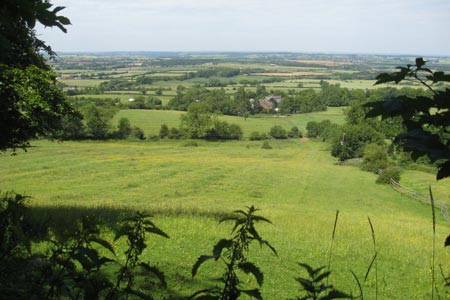
The First English Civil War
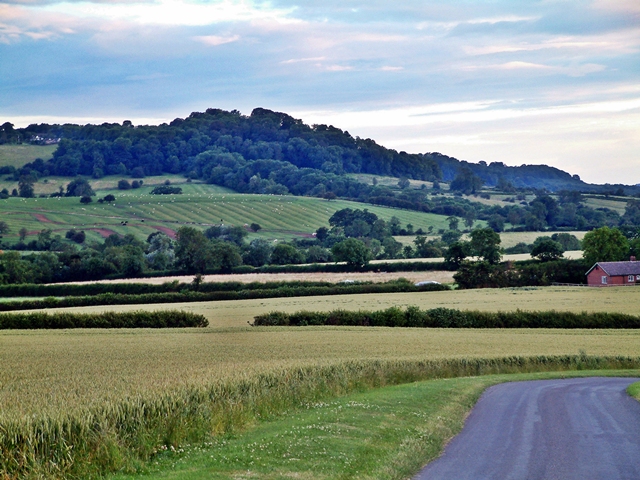
In early January 1642, a few days after his failure to capture five members of the House of Commons, fearing for his own personal safety and for that of his family and retinue, Charles left the London area. Further negotiations by frequent correspondence between the King and the Long Parliament through to early summer proved fruitless. As the summer progressed, cities and towns declared their sympathies for one faction or the other: for example, the garrison of Portsmouth under the command of Sir George Goring declared for the King,but when Charles tried to acquire arms for his cause from Kingston upon Hull, the depository for the weapons used in the previous Scottish campaigns, Sir John Hotham, the military governor appointed by Parliament in January, initially refused to let Charles enter Hull, and when Charles returned with more men, drove them off. Charles issued a warrant for Hotham to be arrested as a traitor but was powerless to enforce it. Throughout the summer months, tensions rose and there was brawling in a number of places, with the first death of the conflict taking place in Manchester.

At the outset of the conflict, much of the country remained neutral, though the Royal Navy and most English cities favoured Parliament, while the King found considerable support in rural communities. Historians estimate that between them, both sides had only about 15,000 men[citation needed]. However, the war quickly spread and eventually involved every level of society. Many areas attempted to remain neutral, some formed bands of Clubmen to protect their localities against the worst excesses of the armies of both sides but most found it impossible to withstand both the King and Parliament. On one side, the King and his supporters thought that they fought for traditional government in Church and state. On the other, most supporters of the Parliamentary cause initially took up arms to defend what they thought of as the traditional balance of government in Church and state, which the bad advice the King had received from his advisers had undermined before and during the "Eleven Years' Tyranny". The views of the Members of Parliament ranged from unquestioning support of the King — at one point during the First Civil War, more members of the Commons and Lords gathered in the King's Oxford Parliament than at Westminster — through to radicals, who wanted major reforms in favour of religious independence and the redistribution of power at the national level.[citation needed] However, even the most radical supporters of the Parliamentarian cause still favoured the retention of Charles on the throne.
After the debacle at Hull, Charles moved on to Nottingham, where on 22 August 1642, he raised throyal standard.[When he raised his standard, Charles had with him about 2,000 cavalry and a small number of Yorkshire infantry-men, and using the archaic system of a Commission of Array, Charles' supporters started to build a larger army around the standard. Charles moved in a south-westerly direction, first to Stafford, and then on to Shrewsbury, because the support for his cause seemed particularly strong in the Severn valley area and in North Wales. While passing through Wellington, in what became known as the "Wellington Declaration", he declared that he would uphold the "Protestant religion, the laws of England, and the liberty of Parliament".

The Parliamentarians who opposed the King had not remained passive during this pre-war period. As in the case of Kingston upon Hull they had taken measures to secure strategic towns and cities, by appointing men sympathetic to their cause, and on 9 June they had voted to raise an army of 10,000 volunteers, appointing Robert Devereux, 3rd Earl of Essex commander three days later. He received orders "to rescue His Majesty's person, and the persons of the Prince [of Wales] and the Duke of York out of the hands of those desperate persons who were about them". The Lords Lieutenant, whom Parliament appointed, used the Militia Ordinance to order the militia to join Essex's army.
Two weeks after the King had raised his standard at Nottingham, Essex led his army north towards Northampton, picking up support along the way (including a detachment of Cambridgeshire cavalry raised and commanded by Oliver Cromwell). By the middle of September Essex's forces had grown to 21,000 infantry and 4200 cavalry and dragoons. On 14 September he moved his army to Coventry and then to the north of the Cotswolds, a strategy which placed his army between the Royalists and London. With the size of both armies now in the tens of thousands, and only Worcestershire between them, it was inevitable that cavalry reconnaissance units would sooner or later meet. This happened in the first major skirmish of the Civil War, when a cavalry troop of about 1,000 Royalists commanded by Prince Rupert, a German nephew of the King and one of the outstanding cavalry commanders of the war, defeated a Parliamentary cavalry detachment under the command of Colonel John Brown in the Battle of Powick Bridge, at a bridge across the River Teme close to Worcester.

Prince Rupert of the Rhine
 Rupert withdrew to Shrewsbury, where a council-of-war discussed two courses of action: whether to advance towards Essex's new position near Worcester, or to march along the now opened road towards London. The Council decided to take the London route, but not to avoid a battle, for the Royalist generals wanted to fight Essex before he grew too strong, and the temper of both sides made it impossible to postpone the decision. In the Earl of Clarendon's words: "it was considered more counsellable to march towards London, it being morally sure that Essex would put himself in their way" Accordingly, the army left Shrewsbury
Rupert withdrew to Shrewsbury, where a council-of-war discussed two courses of action: whether to advance towards Essex's new position near Worcester, or to march along the now opened road towards London. The Council decided to take the London route, but not to avoid a battle, for the Royalist generals wanted to fight Essex before he grew too strong, and the temper of both sides made it impossible to postpone the decision. In the Earl of Clarendon's words: "it was considered more counsellable to march towards London, it being morally sure that Essex would put himself in their way" Accordingly, the army left Shrewsbury on 12 October, gaining two days' start on the enemy, and moved south-east. This had the desired effect, as it forced Essex to move to intercept them.
on 12 October, gaining two days' start on the enemy, and moved south-east. This had the desired effect, as it forced Essex to move to intercept them.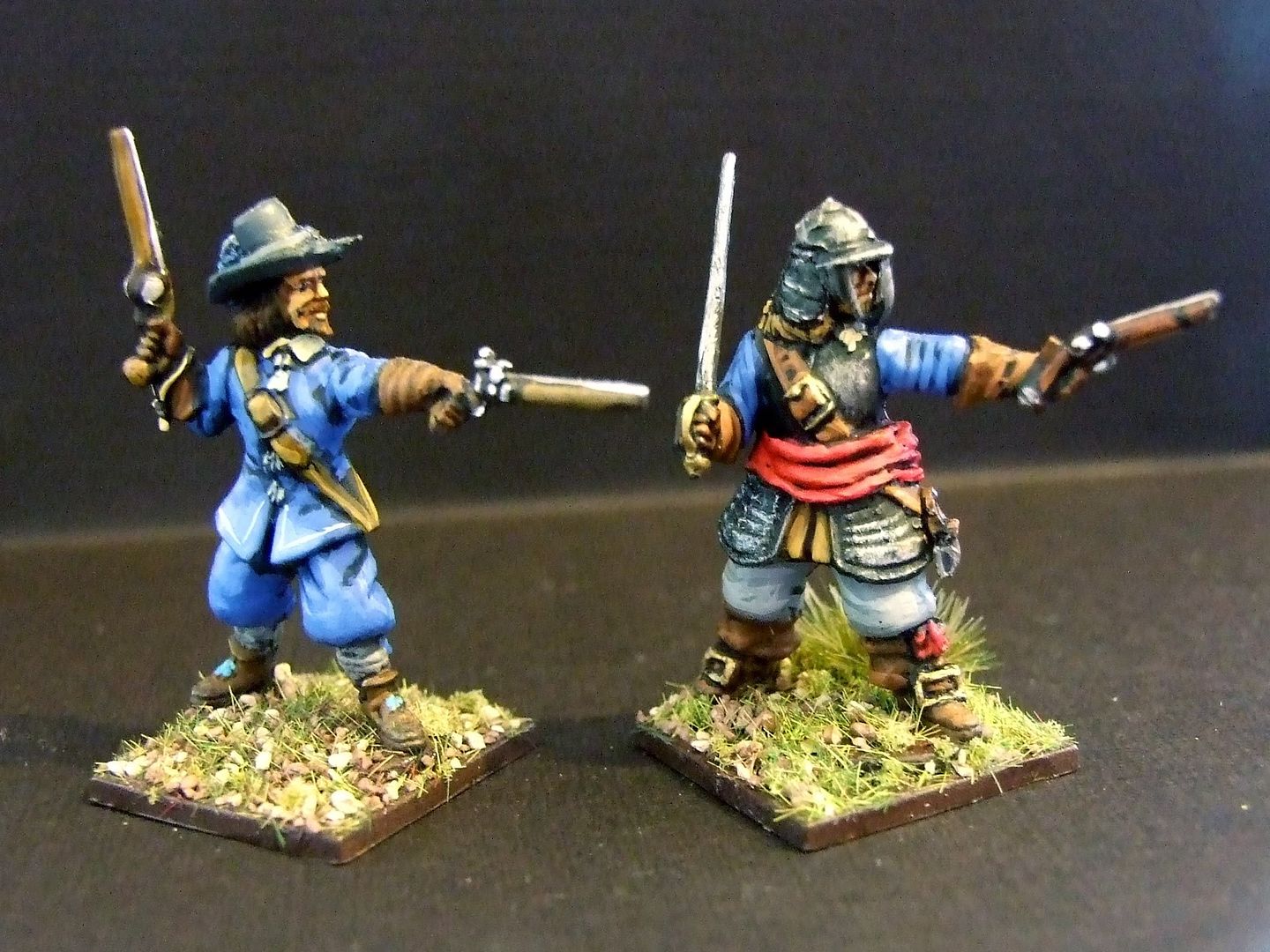
The first pitched battle of the war, fought at Edgehill on 23 October 1642, proved inconclusive, and both the Royalists and Parliamentarians claimed it as a victory. The second field action of the war, the stand-off at Turnham Green, saw Charles forced to withdraw to Oxford. This city would serve as his base for the remainder of the war.

In 1643 the Royalist forces won at Adwalton Moor(above) and gained control of most of Yorkshire.[61] In the Midlands, a Parliamentary force under Sir John Gell, 1st Baronet besieged and captured the cathedral city of Lichfield, after the death of the original commander, Lord Brooke.This group subsequently joined forces with Sir John Brereton to fight the inconclusive Battle of Hopton Heath (19 March 1643), where the Royalist commander, the Earl of Northampton, was killed.Subsequent battles in the west of England at Lansdowne and at Roundway Down also went to the Royalists.Prince Rupert could then take Bristol. In the same year, Oliver Cromwell formed his troop of "Ironsides", a disciplined unit that demonstrated his military leadership ability. With their assistance, he won a victory at the Battle of Gainsborough in July.
In general, the early part of the war went well for the Royalists. The turning point came in the late summer and early autumn of 1643, when the Earl of Essex's army forced the king to raise the siege of Gloucester and then brushed the Royalist army aside at the First Battle of Newbury (20 September 1643), in order to return triumphantly to London. Other Parliamentarian forces won the Battle of Winceby, giving them control of Lincoln. Political manoeuvering to gain an advantage in numbers led Charles to negotiate a ceasefire in Ireland, freeing up English troops to fight on the Royalist side in England,while Parliament offered concessions to the Scots in return for aid and assistance.

With the help of the Scots, Parliament won at Marston Moor (2 July 1644), gaining York and the north of England. Cromwell's conduct in this battle proved decisive, and demonstrated his potential as both a political and an important
 military leader. In September 1644 Castle Dore was used by Royalist troops during the Battle of Lostwithiel in the English Civil War
military leader. In September 1644 Castle Dore was used by Royalist troops during the Battle of Lostwithiel in the English Civil WarThe defeat at the Battle of Lostwithiel in Cornwall, however, marked a serious reverse for Parliament in the south-west of England.Subsequent fighting around Newbury (27 October 1644), though tactically indecisive, strategically gave another check to Parliament.

Oliver CromwellIn 1645 Parliament reaffirmed its determination to fight the war to a finish. It passed the Self-denying Ordinance, by which all members of either House of Parliament laid down their commands, and re-organized its main forces into the New Model Army ("Army"), under the command of Sir Thomas Fairfax, with Cromwell as his second-in-command and Lieutenant-General of Horse. In two decisive engagements—the Battle of Naseby on 14 June and the Battle of Langport on 10 July—the Parliamentarians effectively destroyed Charles' armies.

In the remains of his English realm Charles attempted to recover a stable base of support by consolidating the Midlands. He began to form an axis between Oxford and Newark on Trent in Nottinghamshire. Those towns had become fortresses and showed more reliable loyalty to him than to others. He took Leicester, which lies between them, but found his resources exhausted. Having little opportunity to replenish them, in May 1646 he sought shelter with a Presbyterian Scottish army at Southwell in Nottinghamshire. Charles was eventually handed over to the English Parliament by the Scots and was imprisoned. This marked the end of the First English Civil War.

The Second English Civil War.BELOW CAVENDISH KILLED AT GAINSBOROUGH

"And when did you last see your father?" by William Frederick Yeames.
 Charles I took advantage of the deflection of attention away from himself to negotiate a secret treaty with the Scots, again promising church reform, on 28 December 1647. Under the agreement, called the "Engagement," the Scots undertook to invade England on Charles' behalf and restore him to the throne on condition of the establishment of Presbyterianism for three years.
Charles I took advantage of the deflection of attention away from himself to negotiate a secret treaty with the Scots, again promising church reform, on 28 December 1647. Under the agreement, called the "Engagement," the Scots undertook to invade England on Charles' behalf and restore him to the throne on condition of the establishment of Presbyterianism for three years. 
A series of Royalist uprisings throughout England and a Scottish invasion occurred in the summer of 1648. Forces loyal to Parliament put down most of the uprisings in England after little more than skirmishes, but uprisings in Kent, Essex and Cumberland, the rebellion in Wales, and the Scottish invasion involved the fighting of pitched battles and prolonged sieges.


In the spring of 1648 unpaid Parliamentarian troops in Wales changed sides. Colonel Thomas Horton defeated the Royalist rebels at the Battle of St Fagans (8 May) and the rebel leaders surrendered to Cromwell on 11 July after the protracted two-month siege of Pembroke.Sir Thomas Fairfax defeated a Royalist uprising in Kent at the Battle of Maidstone on 24 June. Fairfax, after his success at Maidstone and the pacification of Kent, turned northward to reduce Essex, where, under their ardent, experienced and popular leader Sir Charles Lucas, the Royalists had taken up arms in great numbers. Fairfax soon drove the enemy into Colchester, but his first attack on the town met with a repulse and he had to settle down to a long siege.
In the North of England, Major-General John Lambert fought a very successful campaign against a number of Royalist uprisings—the largest that of Sir Marmaduke Langdale in Cumberland.[84] Thanks to Lambert's successes, the Scottish commander, the Duke of Hamilton, had perforce to take the western route through Carlisle in his pro-Royalist Scottish invasion of England.The Parliamentarians under Cromwell engaged the Scots at the Battle of Preston (17 August – 19 August). The battle took place largely at Walton-le-Dale near Preston in Lancashire, and resulted in a victory by the troops of Cromwell over the Royalists and Scots commanded by Hamilton.his Parliamentarian victory marked the end of the Second English Civil War.
Nearly all the Royalists who had fought in the First Civil War had given their parole not to bear arms against the Parliament, and many honourable Royalists, like Lord Astley, refused to break their word by taking any part in the second war. So the victors in the Second Civil War showed little mercy to those who had brought war into the land again. On the evening of the surrender of Colchester, Parliamentarians had Sir Charles Lucas and Sir George Lisle shot.[Parliamentary authorities sentenced the leaders of the Welsh rebels, Major-General Rowland Laugharne, Colonel John Poyer and Colonel Rice Powel to death, but executed Poyer alone (25 April 1649), having selected him by lot.[87] Of five prominent Royalist peers who had fallen into the hands of Parliament, three, the Duke of Hamilton, the Earl of Holland, and Lord Capel, one of the Colchester prisoners and a man of high character, were beheaded at Westminster on 9 March.

Trial of Charles I for treason
The betrayal by Charles caused Parliament to debate whether to return the King to power at all. Those who still supported Charles' place on the throne tried once more to negotiate with him. Furious that Parliament continued to countenance Charles as a ruler, the Army marched on Parliament and conducted "Pride's Purge" (named after the commanding officer of the operation, Thomas Pride) in December 1648.Troops arrested 45 Members of Parliament and kept 146 out of the chamber. They allowed only 75 Members in, and then only at the Army's bidding. This Rump Parliament received orders to set up, in the name of the people of England, a High Court of Justice for the trial of Charles I for treason.
At the end of the trial the 59 Commissioners (judges) found Charles I guilty of high treason, as a "tyrant, traitor, murderer and public enemy".His beheading took place on a scaffold in front of the Banqueting House of the Palace of Whitehall on 30 January 1649. (After the Restoration in 1660, Charles II executed the surviving regicides not living in exile or sentenced them to life imprisonment.)
The Third English Civil War
Ireland had known continuous war since the rebellion of 1641, with most of the island controlled by the Irish Confederates.Increasingly threatened by the armies of the English Parliament after Charles I's arrest in 1648, the Confederates signed a treaty of alliance with the English Royalists.[95] The joint Royalist and Confederate forces under the Duke of Ormonde attempted to eliminate the Parliamentary army holding Dublin, but their opponents routed them at the Battle of Rathmines (2 August 1649).As the former Member of Parliament Admiral Robert Blake blockaded Prince Rupert's fleet in Kinsale, Oliver Cromwell could land at Dublin on 15 August 1649 with an army to quell the Royalist alliance in Ireland.
Cromwell's suppression of the Royalists in Ireland during 1649 still has a strong resonance for many Irish people. After the siege of Drogheda
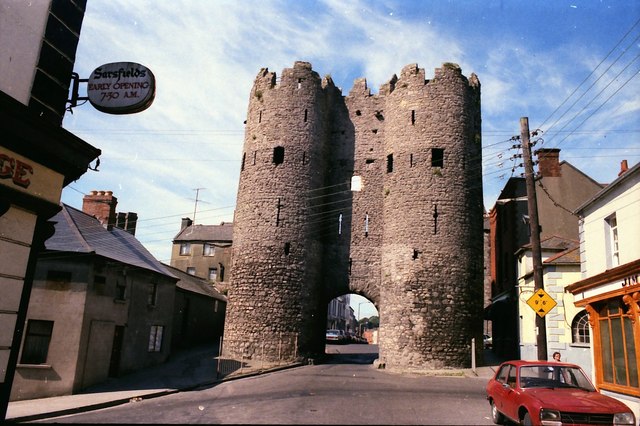 ,the massacre of nearly 3,500 people—comprising around 2,700 Royalist soldiers and 700 others, including civilians, prisoners, and Catholic priests (Cromwell claimed all the men carrying arms)—became one of the historical memories that has driven Irish-English and Catholic-Protestant strife during the last three centuries. However, the massacre has significance mainly as a symbol of the Irish perception of Cromwellian cruelty, as far more people died in the subsequent guerrilla and scorched-earth fighting in the country than at infamous massacres such as Drogheda
,the massacre of nearly 3,500 people—comprising around 2,700 Royalist soldiers and 700 others, including civilians, prisoners, and Catholic priests (Cromwell claimed all the men carrying arms)—became one of the historical memories that has driven Irish-English and Catholic-Protestant strife during the last three centuries. However, the massacre has significance mainly as a symbol of the Irish perception of Cromwellian cruelty, as far more people died in the subsequent guerrilla and scorched-earth fighting in the country than at infamous massacres such as Drogheda  and Wexford.
and Wexford.  The Parliamentarian conquest of Ireland ground on for another four years until 1653, when the last Irish Confederate and Royalist troops surrendered. Historians have estimated[citation needed]
The Parliamentarian conquest of Ireland ground on for another four years until 1653, when the last Irish Confederate and Royalist troops surrendered. Historians have estimated[citation needed] that around 30% of Ireland's population either died or had gone into exile by the end of the wars. The victors confiscated almost all Irish Catholic-owned land in the wake of the conquest and distributed it to the Parliament's creditors, to the Parliamentary soldiers who served in Ireland, and to English people who had settled there before the war.
that around 30% of Ireland's population either died or had gone into exile by the end of the wars. The victors confiscated almost all Irish Catholic-owned land in the wake of the conquest and distributed it to the Parliament's creditors, to the Parliamentary soldiers who served in Ireland, and to English people who had settled there before the war.
The execution of Charles I altered the dynamics of the Civil War in Scotland, which had raged between Royalists and Covenanters since 1644. By 1649, the struggle had left the Royalists there in disarray and their erstwhile leader, the Marquess of Montrose,
 had gone into exile. At first, Charles II encouraged Montrose to raise a Highland army to fight on the Royalist side.
had gone into exile. At first, Charles II encouraged Montrose to raise a Highland army to fight on the Royalist side.
However, when the Scottish Covenanters (who did not agree with the execution of Charles I and who feared for the future of Presbyterianism and Scottish independence under the new Commonwealth) offered him the crown of Scotland, Charles abandoned Montrose to his enemies. However, Montrose, who had raised a mercenary force in Norway,[100] had already landed and could not abandon the fight. He did not succeed in raising many Highland clans and the Covenanters defeated his army at the Battle of Carbisdale in Ross-shire  on 27 April 1650. The victors captured Montrose shortly afterwards and took him to Edinburgh. On 20 May the Scottish Parliament sentenced him to death and had him hanged the next day.
on 27 April 1650. The victors captured Montrose shortly afterwards and took him to Edinburgh. On 20 May the Scottish Parliament sentenced him to death and had him hanged the next day.
 on 27 April 1650. The victors captured Montrose shortly afterwards and took him to Edinburgh. On 20 May the Scottish Parliament sentenced him to death and had him hanged the next day.
on 27 April 1650. The victors captured Montrose shortly afterwards and took him to Edinburgh. On 20 May the Scottish Parliament sentenced him to death and had him hanged the next day.
"Cromwell at Dunbar", by Andrew Carrick Gow 

Charles II landed in Scotland at Garmouth in Morayshire  on 23 June 1650[and signed the 1638 National Covenant and the 1643 Solemn League and Covenant shortly after coming ashore.[With his original Scottish Royalist followers and his new Covenanter allies, King Charles II became the greatest threat facing the new English republic. In response to the threat, Cromwell left some of his lieutenants in Ireland to continue the suppression of the Irish Royalists and returned to England.
on 23 June 1650[and signed the 1638 National Covenant and the 1643 Solemn League and Covenant shortly after coming ashore.[With his original Scottish Royalist followers and his new Covenanter allies, King Charles II became the greatest threat facing the new English republic. In response to the threat, Cromwell left some of his lieutenants in Ireland to continue the suppression of the Irish Royalists and returned to England.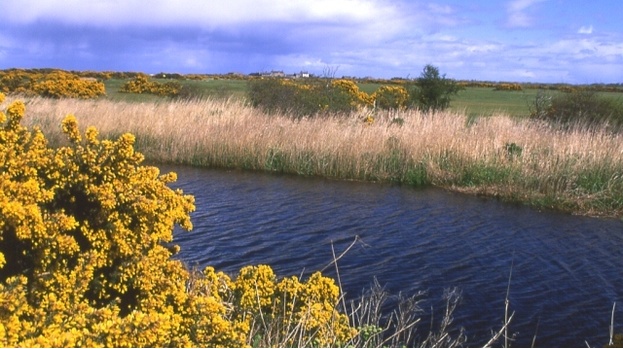
 on 23 June 1650[and signed the 1638 National Covenant and the 1643 Solemn League and Covenant shortly after coming ashore.[With his original Scottish Royalist followers and his new Covenanter allies, King Charles II became the greatest threat facing the new English republic. In response to the threat, Cromwell left some of his lieutenants in Ireland to continue the suppression of the Irish Royalists and returned to England.
on 23 June 1650[and signed the 1638 National Covenant and the 1643 Solemn League and Covenant shortly after coming ashore.[With his original Scottish Royalist followers and his new Covenanter allies, King Charles II became the greatest threat facing the new English republic. In response to the threat, Cromwell left some of his lieutenants in Ireland to continue the suppression of the Irish Royalists and returned to England.
He arrived in Scotland on 22 July 1650 and proceeded to lay siege to Edinburgh. By the end of August disease and a shortage of supplies had reduced his army and he had to order a retreat towards his base at Dunbar. A Scottish army, assembled under the command of David Leslie, tried to block the retreat, but Cromwell defeated them at the Battle of Dunbar on 3 September.Cromwell's army then took Edinburgh, and by the end of the year his army had occupied much of southern Scotland.
tried to block the retreat, but Cromwell defeated them at the Battle of Dunbar on 3 September.Cromwell's army then took Edinburgh, and by the end of the year his army had occupied much of southern Scotland.
 tried to block the retreat, but Cromwell defeated them at the Battle of Dunbar on 3 September.Cromwell's army then took Edinburgh, and by the end of the year his army had occupied much of southern Scotland.
tried to block the retreat, but Cromwell defeated them at the Battle of Dunbar on 3 September.Cromwell's army then took Edinburgh, and by the end of the year his army had occupied much of southern Scotland.In July 1651, Cromwell's forces crossed the Firth of Forth into Fife and defeated the Scots at the Battle of Inverkeithing (
 20 July 1651).The New Model Army advanced towards Perth, which allowed Charles, at the head of the Scottish army, to move south into England. Cromwell followed Charles into England, leaving George Monck to finish the campaign in Scotland. Monck took Stirling on 14 August and Dundee on 1 September.[107] The next year, 1652, saw the mopping up of the remnants of Royalist resistance, and under the terms of the "Tender of Union", the Scots received 30 seats in a united Parliament in London, with General Monck appointed as the military governor of Scotland.[108]
20 July 1651).The New Model Army advanced towards Perth, which allowed Charles, at the head of the Scottish army, to move south into England. Cromwell followed Charles into England, leaving George Monck to finish the campaign in Scotland. Monck took Stirling on 14 August and Dundee on 1 September.[107] The next year, 1652, saw the mopping up of the remnants of Royalist resistance, and under the terms of the "Tender of Union", the Scots received 30 seats in a united Parliament in London, with General Monck appointed as the military governor of Scotland.[108]England
Although Cromwell's New Model Army had defeated a Scottish army at Dunbar,
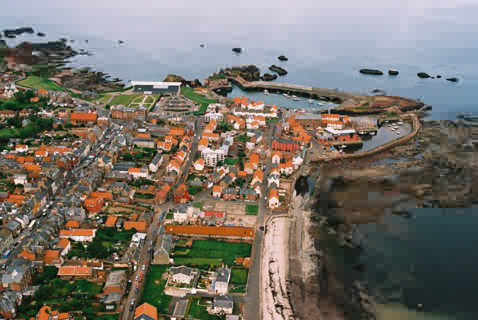
Cromwell could not prevent Charles II from marching from Scotland deep into England at the head of another Royalist army. The Royalists marched to the west of England because English Royalist sympathies were strongest in that area, but although some English Royalists joined the army, they came in far fewer numbers than Charles and his Scottish supporters had hoped. Cromwell finally engaged and defeated the new king at Worcester on 3 September 1651.Charles II
.jpg/220px-Charles_II_(de_Champaigne).jpg) escaped, via safe houses and a famous oak tree, to France, ending the civil wars.
escaped, via safe houses and a famous oak tree, to France, ending the civil wars.(born May 29, 1630, London, Eng.died Feb. 6, 1685, London) King of Great Britain and Ireland (166085). Son of Charles I and Henrietta Maria, he supported his father in the English Civil Wars. After his father's execution, he invaded England in 1651 but was defeated at Worcester. He then spent years in exile until Oliver Cromwell died and conditions favored a return to the monarchy. His Declaration of Breda paved the way for him to be proclaimed king in May 1660 ( Restoration). He became known as the Merry Monarch for his lifting of Puritan restrictions on entertainment and his own love of pleasure; his best-known mistress was the actress Nell Gwyn.

Important events of his reign included the controversial Treaty of Dover and two wars with the Dutch ( Anglo-Dutch
 Wars). By the 1670s the miscarriages of his queen, Catherine of Braganza, had reduced hopes that he would have a legitimate heir
Wars). By the 1670s the miscarriages of his queen, Catherine of Braganza, had reduced hopes that he would have a legitimate heir 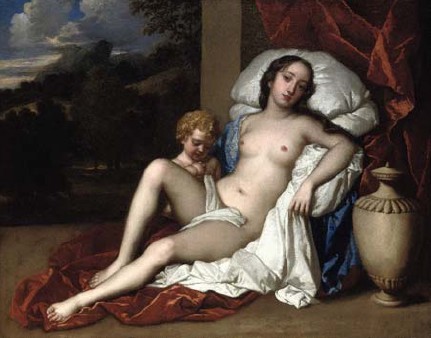 (though he left at least 14 illegitimate offspring). He almost lost control of his government when hysteria arose over the Popish Plot to replace him with his Roman Catholic brother James (the future James II).
(though he left at least 14 illegitimate offspring). He almost lost control of his government when hysteria arose over the Popish Plot to replace him with his Roman Catholic brother James (the future James II).  Charles kept his nerve, reestablished his political control, and eventually enjoyed a resurgence in loyalty. His political adaptability and acumen enabled him to steer his country through the struggle between Anglicans, Catholics, and dissenters that marked his reign.The Popish Plot was a fictitious conspiracy concocted by Titus Oates that between 1678 and 1681 gripped the Kingdoms of England and Scotland in Anti-Catholic hysteria.[Oates alleged that there existed an extensive Catholic conspiracy to assassinate Charles II, accusations that led to the execution of at least 22 men and precipitated the Exclusion Bill Crisis. Eventually Oates' intricate web of accusations fell apart, leading to his arrest and conviction for perjury.
Charles kept his nerve, reestablished his political control, and eventually enjoyed a resurgence in loyalty. His political adaptability and acumen enabled him to steer his country through the struggle between Anglicans, Catholics, and dissenters that marked his reign.The Popish Plot was a fictitious conspiracy concocted by Titus Oates that between 1678 and 1681 gripped the Kingdoms of England and Scotland in Anti-Catholic hysteria.[Oates alleged that there existed an extensive Catholic conspiracy to assassinate Charles II, accusations that led to the execution of at least 22 men and precipitated the Exclusion Bill Crisis. Eventually Oates' intricate web of accusations fell apart, leading to his arrest and conviction for perjury. A calm perusal of all the testimony reveals the most glaring contradictions, lies, and impossibilities, which the turbulent mob, aroused to religious frenzy, and urged on by the Whig Party, refused to consider or to allow the courts to consider. Oates’s popularity soon began to wane, and in May 1680, he was tried for perjury and condemned to be whipped, degraded, pilloried, and imprisoned for life. Judge Jeffreys said of him: “He has deserved more punishment than the laws of the land can inflict.” Later, in the reign of William and Mary, he obtained a royal pardon and a pension, which was withdrawn in 1693 at the instance of Queen Mary. In 1690 he was taken up by the Baptists, only to be again expelled from the ministry for dishonesty. In 1691 he attempted another fraudulent plot, but it came to nothing.
A calm perusal of all the testimony reveals the most glaring contradictions, lies, and impossibilities, which the turbulent mob, aroused to religious frenzy, and urged on by the Whig Party, refused to consider or to allow the courts to consider. Oates’s popularity soon began to wane, and in May 1680, he was tried for perjury and condemned to be whipped, degraded, pilloried, and imprisoned for life. Judge Jeffreys said of him: “He has deserved more punishment than the laws of the land can inflict.” Later, in the reign of William and Mary, he obtained a royal pardon and a pension, which was withdrawn in 1693 at the instance of Queen Mary. In 1690 he was taken up by the Baptists, only to be again expelled from the ministry for dishonesty. In 1691 he attempted another fraudulent plot, but it came to nothing. 
Jane Ohlmeyer discarded and replaced the historical title "English Civil War" with the titles the "Wars of the Three" and the "British Civil Wars", positing that the civil war in England cannot be understood isolated from events in other parts of Great Britain and Ireland; King Charles I remains crucial, not just as King of England, but also because of his relationship with the peoples of his other realms. For example, the wars began when King Charles I tried imposing an Anglican Prayer Book upon Scotland, and when this was met with resistance from the Covenanters, he needed an army to impose his will. However, this forced him to call an English Parliament to raise new taxes to pay for the army. The English Parliaments were not willing to grant Charles the revenue he needed to pay for the Scottish expeditionary army unless he addressed their grievances. By the early 1640s, Charles was left in a state of near permanent crisis management; often he was not willing to concede enough ground to any one faction to neutralise the threat, and in some circumstances to do so would only antagonise another faction. For example, Charles finally agreed upon terms with the Covenanters in August 1641, but although this might have weakened the position of the English Parliament, the Irish Rebellion of 1641 broke out in October 1641, largely negating the political advantage he had obtained by relieving himself of the cost of the Scottish invasion.[
MODEL SOLDIERS FROM FIXED BAYONET Unpainted £5 each plus free painted model. Non-Dinpinti / 7 Euro + soldatino gratis con ogni ordine. This applies only to the FIXED BAYONET SOLDIERS which are of our unique manufacture or made for us.SEE list of what is available .All other soldiers listed here are just those we like and want to feature.We do not sell anything thats not on our list.



No comments:
Post a Comment